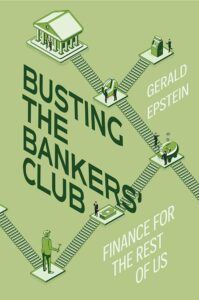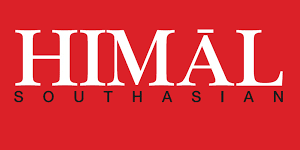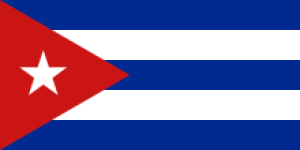To Democratize Finance, We Must Take The Banks Away From The Bankers
No Comments yet 02-18-2024 ~ Progressive economist Gerald Epstein explains how we can build a banking system that puts people over profit.
02-18-2024 ~ Progressive economist Gerald Epstein explains how we can build a banking system that puts people over profit.
Our current banking and financial system has transformed politics in favor of the rich, debilitating democratic institutions, destroying the common good and hurting the poor in the process. In this context, the challenge we face is to end plutocracy and restore democracy.
It is this challenge that world-renowned progressive economist Gerald Epstein brilliantly elucidates in his pathbreaking book Busting the Bankers’ Club: Finance for the Rest of Us and which he discusses in this exclusive interview for Truthout.
One possible way to accomplish this dual feat is by creating an alternative banking system that democratizes finance. In fact, the movement for public banking — a system where banks are owned by the people rather than the wealthy elite — is gaining momentum in many parts of the country. Just this month, a blueprint for the implementation of a public bank in the state of New Jersey was submitted to Gov. Phil Murphy.
In the interview that follows, which builds on our previous conversations about how “SEC’s Approval of Bitcoin Markets May Set the Stage for Financial Disaster” and how “A Growing Number of Economists Are Joining the Fight to Rein In the Big Banks,” Epstein addresses the issue of democratic finance, including the advantages that it offers as well as the challenges that it faces in a society where money dominates politics. Epstein is a professor of economics and co-director of the Political Economy Research Institute (PERI) at the University of Massachusetts Amherst.
C.J. Polychroniou: Jerry, in your recently published book Busting the Bankers’ Club you highlight the need for changes to the current financial system that go beyond regulation. As you write, “we need banks without bankers.” You propose public banking as the best way toward creating “a financial system that works for all of us.” What are the advantages of public banking, or having banks without bankers?
Gerald Epstein: There are numerous advantages to having more public banks in our financial ecosystem. But before I discuss these advantages, let me explain what I mean by public banking or “banks without bankers.” Many public banking advocates and activists define “public banks” as banks that are owned by governments — federal, regional, state or local — and that are tasked with serving a public mission.
This is a fine definition but when I use it, I mean something a bit broader: I include government-owned financial institutions, but I also include any financial institution for which maximizing profit is not the main goal. These banks must have a main mission that entails pursuing social goals such as community economic development, the promotion of environmental justice or promotion of cooperative economics. These banks might be purely government owned, but they might also be public-private partnerships. The key is that the “mission orientation,” not profit, has to be dominant.
As Thomas Marois has shown, there has been a resurgence in the creation and use of public banks around the world. There has also been a strong public banking movement in the United States, especially since the great financial crisis and the Occupy movement. As my former graduate student Esra Nur Ugurlu and I discovered when we did a survey of public banking activists, they pursue a number of goals in their attempts to establish public banking institutions: to provide affordable banking services to underserved communities, to invest in key social goods such as affordable housing, to provide more credit for cooperatives and small business, to promote environmental sustainability and fight against climate change.
The potential contributions of public banking to help solve these problems are many. First of all, private banks avoid making investments in these areas because they are perceived to be too risky or not profitable enough. It will largely take financial institutions with a public mission and mandate to make significant progress on many of these challenges.
Second, public banks can provide an alternative to overcharging, speculative mega banks such as JPMorgan Chase and Bank of America. This will help society and the government to be less dependent on these “too big to fail” institutions and, in fact, can make it somewhat easier to just let them go by the wayside.
Third, by leveraging the financial power of the state, and by avoiding having to pay high returns to shareholders or massive salaries to bankers, these public financial institutions can provide basic financial services more cheaply.
Finally, because these public financial institutions will typically not face pressures from shareholders and highly paid management and traders to pursue maximum profits and bonuses, these institutions will take on less speculative and risky investments and be a stabilizing force in financial markets. Further, the governance structures of public banks are typically much more democratic and broadly representative than that of private for-profit banks. Most public banking initiatives have stakeholder and community representation on their boards of directors and/or advisory boards.
What are the challenges facing public banking, and what progress has been made so far towards public banking and finance?
Public banks come in various sizes and locations, and have various structures, procedures and functions. Public banking activists Ugurlu and I interviewed described a number of challenges they faced in their attempts to set up public banks. But one thing they almost all have in common is that they face serious pushback from the major private banking institutions and their allies, that is, from the “Bankers’ Club.”
The American Bankers Association (ABA) and local banking organizations routinely oppose legislation to establish public banks. The ABA position on public banks is as follows:
“The US has a healthy banking system with approximately 5,500 banks that offer a diversity of financial products and services to consumers, businesses and state and local governments. Creating a public bank would not only be redundant in the current marketplace, where financial offerings already efficiently meet customer needs, but potentially dangerous — placing taxpayer funds in institutions that may not have deposit insurance and whose business decisions will be driven by political priorities instead of sound risk management.
Numerous studies on the viability of public banks support the conclusion that they are not necessary, pose a significant risk to taxpayers, and would not provide an overall benefit to the state and local governments they are intended to serve.”
Virtually every sentence in this statement is false, but that does not prevent the ABA’s negative impact on the politics of public banking.
The private banks fear competition, and they fear a slippery slope movement to more public financial institutions and away from private, for-profit ones. There is also often a lack of understanding and interest among the public about the positive roles that public banking can play in their community.
In addition, increasing skepticism about government’s role in society can lead even critics of the big financial institutions to embrace private “solutions” such as cryptocurrency instead of public, community initiatives like public banking. Sometimes those in state government oppose the creation of public banks because they are worried about bank failure, or even the creation of financial institutions outside of their control.
Apart from these political and ideological obstacles, there are a number of rather specific logistical obstacles that public banks face. Ugurlu and I asked public banking activists to describe the major obstacles they faced. These included, first and foremost, acquiring the initial capital needed to start the bank; a continuous source of funds that they can use to lend to the target borrowers; a source of liquidity and financial backup, such as the Federal Reserve System might provide, that they could depend on in cases of unexpected adverse shocks; and community support for their activities.
There are some other factors that we thought would create challenges, but our interviewees did not mention them as important: These included skilled administrators with banking experience and employees who would be interested in working for the bank.
Just this month, the New Jersey Public Bank Implementation Board submitted a blueprint for the creation of a public bank to Gov. Phil Murphy. So, it seems that public banking efforts are indeed gaining momentum and clarity. But would these public banks help cities and state governments keep money away from Wall Street?
Yes, public banking activists are working in a significant number of states in the U.S. Public banking is also widespread in other parts of the globe. Many of these activists have proposed public banking institutions based on the model of the Bank of North Dakota, the only state bank in the U.S. (There is also a new public bank in Guam, with the motto: “The better-for-all-of-us bank: Reinvesting in the communities we serve.”)
The Bank of North Dakota, started by populist activists in 1919, operates on the partnership model: The bank does not take deposits from the public, but rather holds tax funds from the North Dakota Treasury; it does not typically lend directly to final borrowers, but rather lends to “partner” banking institutions who then on-lend to direct customers such as small businesses, housing developers, farm cooperatives, and the like.
The partnership model is being adopted by a number of public banking activist groups, including those in Massachusetts and New Jersey. This partnership model is designed to reduce competition with private financial institutions, with a focus on assuaging the concerns of smaller banks. Moreover, by lending cheaper credit to smaller community banks and helping to provide training for smaller, less experienced borrowers, some public banking models are able to help smaller community banks widen their customer base.
Still, these types of public banks, relatively small as they are, will not reduce these states’ reliance on Wall Street significantly, for example, as far as underwriting infrastructure bond issues and these kinds of financing needs are concerned. But they will help underserved borrowers and meet neglected community needs.
To really be able to compete with Wall Street and the big banks, public banks will have to become larger and more numerous. The Public Banking Act, a federal bill filed by Representatives Alexandria Ocasio-Cortez and Rashida Tlaib, would, if passed, provide a federal regulatory infrastructure, liquidity support, and other assistance for public banks, making the establishment and running of such banks easier and likely to be more successful.
But placing public banking on a more level playing field with the big Wall Street banks will take a lot more than this. After all, the federal government has been bailing out these mega institutions several times to the tune of trillions of dollars over the last 40 years or more. Public banks have some catching up to do.
In your book, you argue that the Federal Reserve can be seen as having the potential to act as a national bank and thus play an important role as an agent of economic development in an era of climate change. Is this a realistic expectation given the model of capitalism that prevails in the U.S. economy and the power of the Bankers’ Club? Indeed, can the Fed ever become more accountable and democratic when the political system itself is dominated by money and makes a mockery of democracy?
The Federal Reserve is the biggest and most powerful public bank we have. Indeed, it is probably the most powerful public bank in the world. Yet, for the most part, it is overly focused on supporting the private financial institutions and markets, including engaging in trillion-dollar bailouts of banks and other financial institutions on what seems to be an increasingly frequent basis.
The Fed should have a broadened mandate to play a role in promoting the transition to a green economy, directly or indirectly increasing capital for underserved communities, and supporting the growth and reach of public banking. The debate over the role of the Fed and a public bank more generally has been a staple of U.S. history, and it is time that we keep it going and increase our calls for a truly public Federal Reserve.
Activists have made some progress around the edges: They have successful broadened the representation on the Regional Federal Reserve’s boards of directors to include fewer bankers and more community members; and during the height of COVID-19 crisis, through their influence on members of Congress, they won concessions from the Fed to include some small business and community credit facilities in their emergency bailout activities.
Yet, as you say, as in previous periods, there is enormous opposition, especially from the Bankers’ Club, to altering the orientation of the Fed. Still, the Fed is a creature of Congress, and, in principle, Congress can change the Fed’s mandate and marching orders. But to succeed here would require more progressive control in Congress which, in turn, would require the protection and expansion of real democracy in the U.S.
The key here is to limit the role of money in politics, but, as political scientist Doug Amy describes on his enormously valuable website, Second-Rate Democracy, restoring democracy will require much more than that. And now, with the threat of fascist Trumpism, our democracy is even more endangered.
Reform or revolution? Which strategy would work best toward enhancing the prospect of radical financial and social restructuring?
In a sense we need both. Where to start? Some believe we need to wait for another great financial crisis to sufficiently shake up the system, to generate enough anger and disgust, to generate a revolutionary moment to transform the economy, with finance along with it. I point out in the last chapter of my book that this is a problematic strategy since we have many cases, some as recent as the great financial crisis, when crises move politics to the right, not just to the left.
I urge people to join up with one or more of the Club Buster groups around the country (or world), for example Americans for Financial Reform, or a public banking initiative, or anti-fossil fuel funding activism, or work for politicians who will fight fascism and protect democracy.
Winning these battles will weaken the Bankers’ Club, encourage reformers and activists, and enhance their power to change our economy in more comprehensive ways — even revolutionary ways. At least, this is my hope.
Copyright © Truthout. May not be reprinted without permission.
C.J. Polychroniou is a political scientist/political economist, author, and journalist who has taught and worked in numerous universities and research centers in Europe and the United States. Currently, his main research interests are in U.S. politics and the political economy of the United States, European economic integration, globalization, climate change and environmental economics, and the deconstruction of neoliberalism’s politico-economic project. He is a regular contributor to Truthout as well as a member of Truthout’s Public Intellectual Project. He has published scores of books and over 1,000 articles which have appeared in a variety of journals, magazines, newspapers and popular news websites. Many of his publications have been translated into a multitude of different languages, including Arabic, Chinese, Croatian, Dutch, French, German, Greek, Italian, Japanese, Portuguese, Russian, Spanish and Turkish. His latest books are Optimism Over Despair: Noam Chomsky On Capitalism, Empire, and Social Change (2017); Climate Crisis and the Global Green New Deal: The Political Economy of Saving the Planet (with Noam Chomsky and Robert Pollin as primary authors, 2020); The Precipice: Neoliberalism, the Pandemic, and the Urgent Need for Radical Change (an anthology of interviews with Noam Chomsky, 2021); and Economics and the Left: Interviews with Progressive Economists (2021).
You May Also Like
Comments
Leave a Reply







